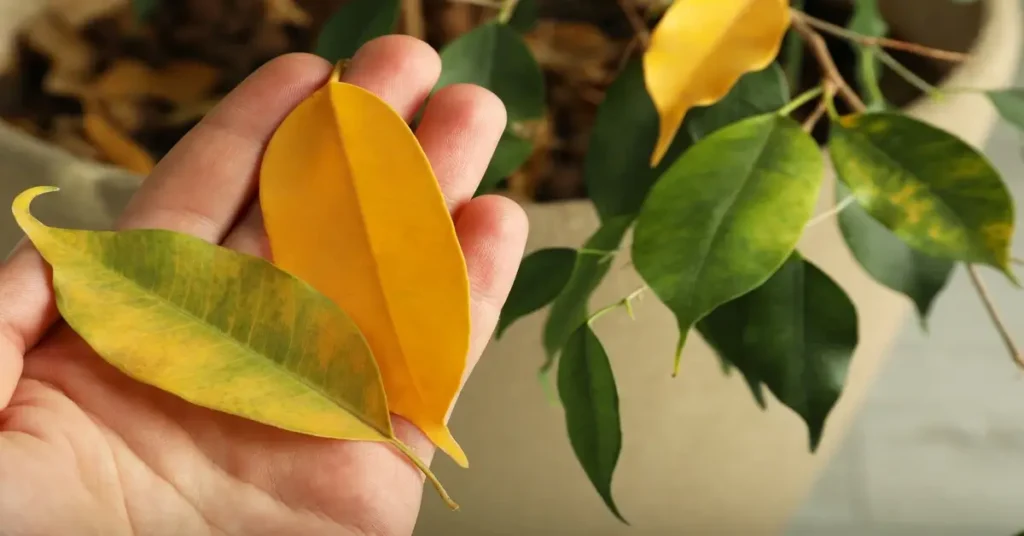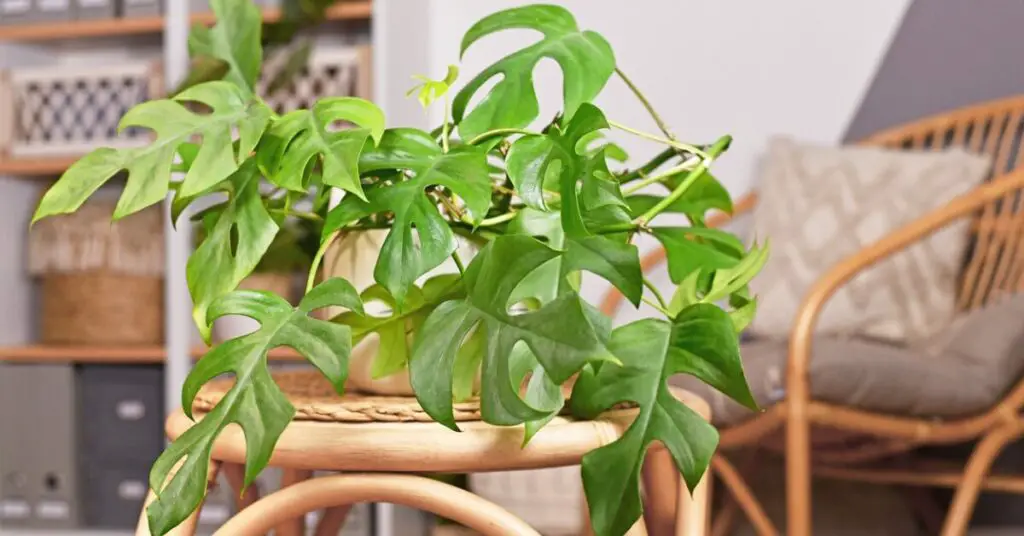You’ve just noticed a yellow leaf on your beloved houseplant, and panic sets in. Should you cut it off? Is your plant sick? Before you reach for the pruning shears, let’s get into plant care to understand why leaves turn yellow and what you should do about it.
Key Takeaway:
Yes, you can cut off yellow leaves as they are often a sign of a problem such as overwatering or nutrient deficiencies. Removing them helps the plant focus its energy on new growth. However, it’s crucial to identify the underlying issue to prevent more yellow leaves in the future.
Reasons Why Indoor Plants Leaves Turn Yellow
Yellow leaves on indoor plants can be a gardener’s nightmare, but understanding the root causes can help you turn things around. Let’s explore some common reasons your plant’s leaves might turn yellow.
Normal Aging
Just like humans, plants age, and it’s perfectly natural. Older leaves may turn yellow as the plant focuses its energy on new growth. If the lower leaves turn yellow and the rest of the plant looks healthy, it’s likely just a part of the plant’s natural life cycle.
Compacted Roots
If your plant has been in the same pot for a long time, the roots can become compacted. This restricts the flow of nutrients and water, causing the leaves to turn yellow. If you notice this, it may be time to repot your plant into a larger container with drainage holes.
Moisture Stress
Both overwatering and underwatering your plants can lead to yellow leaves. Overwatering can lead to root rot while underwatering can make the soil dry out, both of which stress the plant. Adjust your watering schedule based on the needs of your specific plant to prevent moisture stress.
Lack of Nutrients
Nutrient deficiencies, particularly nitrogen deficiency, can cause leaves to turn yellow. The plant may also exhibit stunted growth. You may need to supplement your plant care routine with appropriate fertilizers to address this issue.
Overfeeding
Conversely, overfeeding your plant with too many nutrients can also cause yellowing. Brown tips on the leaves often accompany this. If you suspect overfeeding, you may need to flush the soil with clean water to remove excess nutrients.
Not Enough Light
Plants need light for photosynthesis, and a lack of it can lead to yellow leaves. If your indoor plant is not getting enough sunlight, consider moving it closer to a window or supplementing it with artificial light.
Pests
Pests like aphids and spider mites can also cause your plant leaves to yellow. These pests suck the sap out of the leaves, causing them to turn yellow and eventually brown. If you notice pests, you may need to treat your plant with an appropriate pesticide.
Conclusion
Yellow leaves can signal various issues, from aging to nutrient deficiencies. Rather than hastily removing them, identify the root cause to provide the proper care. Adjusting factors like watering, light, and pest control can significantly affect your plant’s health. Keep an eye on leaf color as a clue to your plant’s needs.



